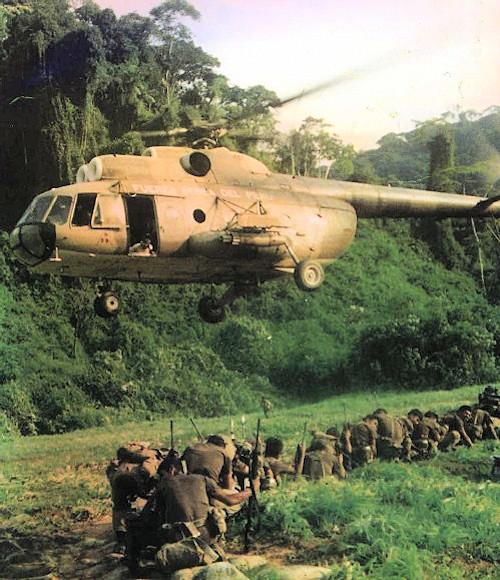Between Ecuador and Peru there has always been a huge border dispute dating back to the first border demarcation carried out by Conquistadores in 1535. The practical consequences of this dispute have not been delayed with several armed conflicts between the two countries mentioned when they became independent of Spain. The first was fought between 1857 and 1860, and ended with the Peruvian conquest of the Amazonas area.
Subsequently, another war for the possession of the area was fought in July 1941 when Ecuadorian troops reoccupied the controversial area around the city of Zarumilla.
Just during the conflict, for the first time, the contenders used the air weapon to reach victory. The Peruvians, in this sense, proved to be very skilled using the most modern CA-310 Libeccio and the older biplane Curtiss CW fighters and the Italians IMAM Ro-37 bis. The use of such tools, coupled with the use of new tactics as the first aviolanci of paratroopers - the first use of this weapon in South America took place in the 1941 war between Ecuador and Peru - guaranteed another victory for the Andean country.
But the tensions with Ecuador were far from being undone and resolved. The border area - especially the Canepa river valley area - became the center of attention for the supposed presence of gold, uranium and oil deposits.
In 1981, therefore, at the end of an Ecuadorian army patrol that had created a military field on the high Canepa highlands, Peru reacted hard by launching several raids with the Sukhoi Su-22A Fitter F, just purchased from the USSR in 38 copies, with the air coverage ensured by the Mirage 5 del 6 ° Grupo Aéreo.
The massive utilization of the airplane by the Peruvians brought its fruits and the Ecuadorian military camp implanted on the heights of the high Canepa was soon recovered also thanks to the successful landing of troops flown by Mi-8TV HIP C of the Army Air Force .
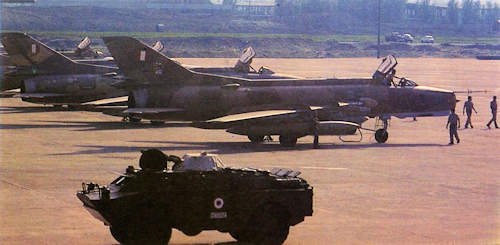
From 1981 onwards, Peru and Ecuador launched a creeping, but steady, racing weapon in view of a possible future conflict. The aerial component of the two mentioned countries could not escape this state of affairs.
Peru continued its previous programs by continuing to buy modern combat aircraft, training and logistics from the Soviet Union, France and Italy.
Among these, 5 Dassault's Mirage 47 multirole fighters, the Sukhoi Su-22A fighter-bombers Fitter F for a total of 52 units, 18 light bombers Canberra B. (I) Mk-68 Second-Hand Purchases, 36 tactical support aircraft A-37B Dragonfly and the Macchi MB-339 tactical trainers (photo). The Italian aircraft were to be built, on the basis of the agreement concluded with Aermacchi by the local air industry in 1981, in a total of 66 units including a combat version called K. The MB-339 acquisition program suffered, however, cuts such as to limit the acquisition to only 19 MB-339AP.
Saved funds served to implement hunting and transport lines with the acquisition of several C-130 Hercules, Antonov An-26 and An-32, as well as the helicopter line (which deserve to be mentioned 6 Agusta AB-212ASW, Agusta-Sikorsky Sea King, Agusta A-109).
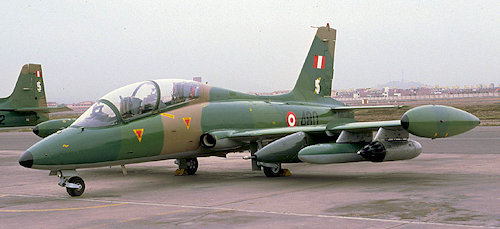
The increase in the technological capabilities corresponded to a proportional increase in the FAP's Peruvian Air Force. From 1980 on the eve of the 1995 conflict, the staff had reached 15.000, of which 50% professionals.
As far as the organization is concerned, however, the FAP, on the eve of the 1995 conflict, was structured into nine Airplanes and 22 Operational Squads distributed in three Air Defense Zone. The main basics were; the “Jorge Chavez” of Lima-Callao where the 3rd Grupo Aéreo was stationed, formed by the Escuadron de Helicopteros 332 ° (on HIP) and 341 ° (UH-1H, Bell 212 and 214); the 8th Grupo Aéreo del Transporte (Escuadron 841 ° - with Boeing 707-323C and Loockeed L-100-20-; 842 °, equipped with Antonov An-32 and An-74; and 843 ° on Cessna 185 and QUEEN AIR A-80); the “Mariano Melgar” of La Joya on which the 4th Grupo Aéreo is lined up with the Escuadron de Caza 411 ° (Su-22) and 412 ° (Mirage 2000 P); the "Capitano Abelardo" of Chiclayo where the The Mirage, 5P 611 ° Escuadron de Caza / 6 ° Grupo Aéreo; the "Captain Concha" of Piura where 711 ° Escuadron was located - mounted on A-37B - de Caza-Bombardeo, located in 7 ° Grupo Aéreo; the "Renan Eloias Oliveira" in Pisca that hosted the 921 ° Escuadron de Bombardeo of the 9 ° Grupo Aéreo, mounted on bombers Canberra; the "Captain Montes" of Talara where were the 22 Su-111 ° Escuadron de Caza LOS TIGRES, of the 11 ° Grupo Aéreo; the "Coronel Vignette" in Iquitos where the Transportes Nacionales de la Selva (TANS) transported lightly DHC-6, Y-1211 and PC-6; The "Rodriguez Ballon" in Arequipa where the HIND attack and HIP tactics of the 211 ° Escuadron of the Grupo Aéreo de Fuerzas Especiales were located.
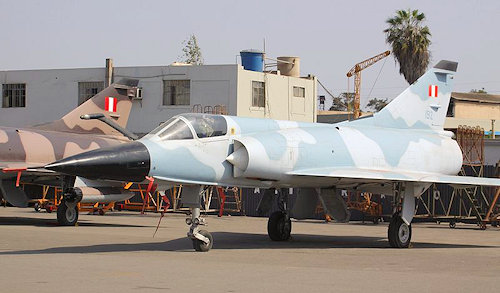
Alongside the FAP, however, there were other aerial components. For example, the Army air service equipped with helicopters to be used primarily in counterterrorism operations against "Sendero Luminoso" guerrillas. And yet, naval air deployed in the bases of Callao and San Juan de Marcona on actual 800 and some thirty aircraft.
So much so, net of the above mentioned numbers, because of the severe crisis that had hit Peru in the '80 and 90 years and the need to combat the Communist guerrillas in the country, the efficiency of FAP aircraft was greatly reduced so much to force the grounding of many of the aircraft mentioned, including the latest Mirage 2000 just purchased from France in 12 specimens.
The situation in the FAE (Ecuadorian Air Force) was clearly different. Although much smaller than the FAP, with the scarce resources available, Quito's military leaders had managed to structure a small, efficient military aeronautical trained by Israeli advisers.
Coordinated by a Operation Command and divided into two Air Zone, the FAE could count on the Taura Air Base where the 21 ° Ala de Combate was located on three departments: the 2111 ° Squadrone, with eleven Sepecat Jaguar S / B fighter bomber; the 2112 ° with thirteen Mirage F-1JA / JE interceptors undergoing modernization with the Cyrano IV radar; the 2113 ° with eleven Dassault-IAI KFIR C-2 fighter bomber.
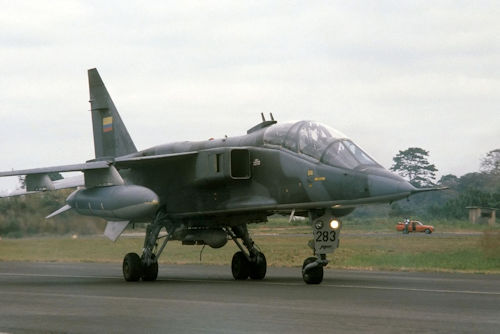
Alongside the combat component, Ecuadorian aeronautics could equally serve as a logistics component made up of 22 ° Ala de Transporte, based on the Escuadron 2211 °, with DHC-6 TWIN OTTER, 2212 ° aircraft, with Alouette III for SAR, and 2213 °, mounted on Cessna 150 Aerobat.
To complete the painting there was finally the 23 ° Ala de Combate with dozens of aircraft that could be used both for training and tactics. In that department, there were about twenty lightweight A-37B reactors Dragonfly and T-33 at the time of radiation.
For the sake of completeness, it should be noted that in the Ecuadorian field there was also an air and navy component equipped with both lighter transport / observation aircraft and helicopters, plus TAME (Transportes Aereos Militares Ecuatorianos) with seven C-130 B / H and some Boeing 727.

